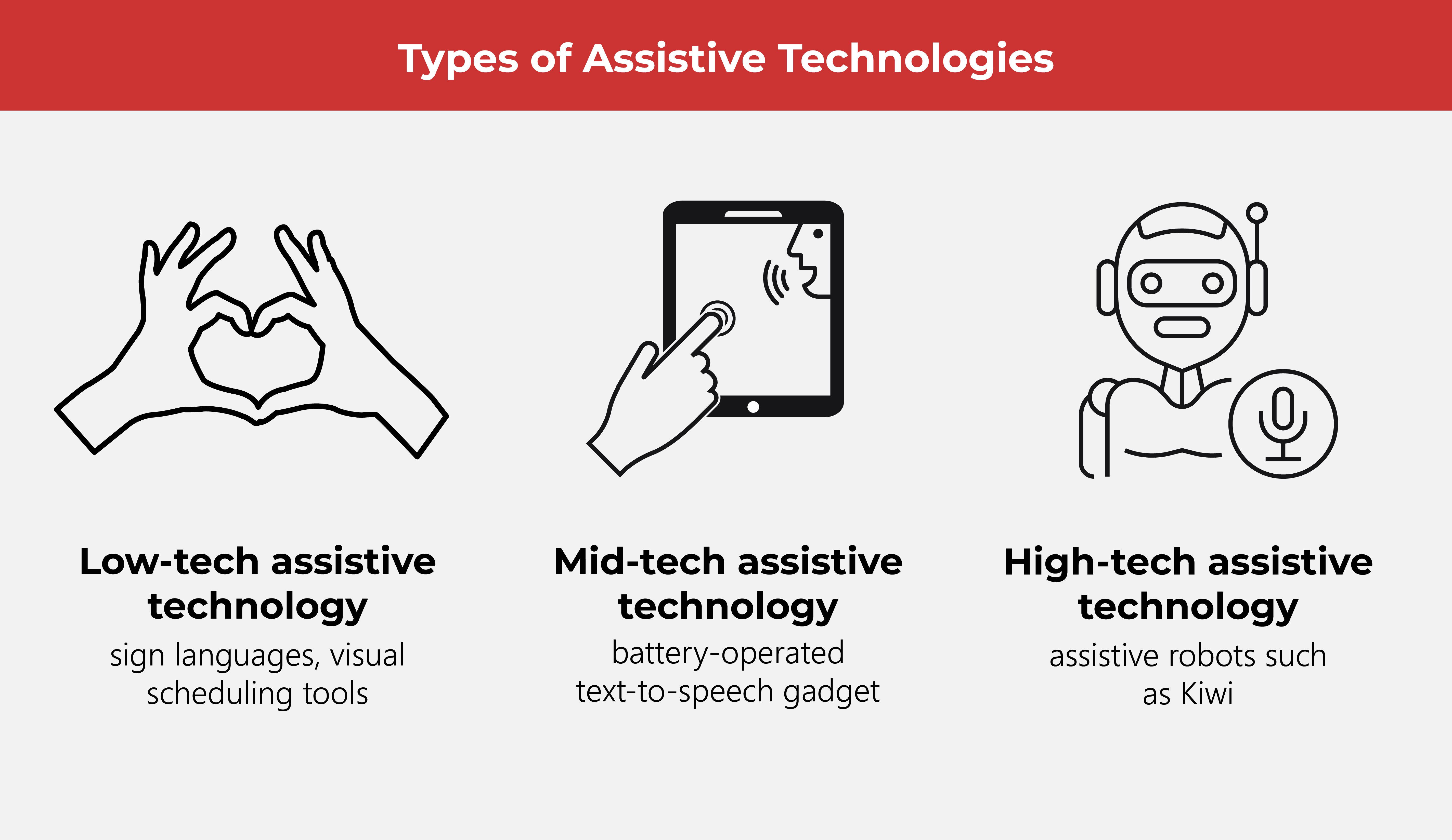Cool Assistive Tech for People with Autism

Today, parents who have children with autism have more options to help their kids learn cognitive, verbal, behavioral, and social skills, thanks to digital innovations and software.
Over the last decade, the number of students enrolled in special education programs increased by 30%. This is according to the National Education Association (NEA). Meanwhile, the Center for Disease Control and Prevention (CDC) reports that 1 in 54 children is diagnosed with autism spectrum disorder (ASD).
Today, there is a need to make applications that help people with autism more accessible, affordable, effective, and engaging. Thanks to innovation, there are plenty that is available for mobile phones, tablets, and computers. Some are even free.
People with autism may find learning skills and behaviors more challenging than neurotypical folks. Some may struggle with verbal communication, interpreting facial expressions and social cues, and calibrating their behavior with others. Parents need to be supportive of their child’s developmental needs and to work with speech, developmental, and behavioral therapists.
In an ideal world, all parents of children with autism have all the resources to assist their children with their learning and developmental needs. However, many families struggle with getting the right help whenever they need it. In these cases, many of these assistive apps augment the help and support humans provide when it comes to teaching skills.
Like many innovations, these apps and innovations are not meant to replace human care, attention, and intervention, but seek to augment existing support.
Kiwi, the socially assistive robot
A team of researchers and robotics students from the University of Southern California Viterbi School of Engineering (USC Viterbi) has developed an assistive learning robot named Kiwi to help children with autism learn.
Past studies suggest that socially assistive robots can aid children with autism in learning. However, these are more effective when the robot can interpret the child’s behavior and adjust accordingly. How can they do this? It has become possible with Artificial Intelligence and machine learning.
Kiwi, a two-foot-tall robot with green feathers and an animated screen face resembles a very cute, digital plushie rather than a high-tech device. Don’t let its friendly voice fool you—its cartoonish features belie its ability to correctly interpret a child’s learning patterns while personalizing educational and instructional sessions.
As Kiwi plays space-themed math games with the child, it personalizes in real-time its games’ difficulty level, adjusting accordingly to the child’s learning and engagement level. It even provides encouraging words when the child gets a correct answer.
Kiwi can do all of these things because of reinforcement learning, a fast-developing subfield in Artificial Intelligence (AI).
The lead author of this research is a young engineering student named Shomin Jain, and his team has been working under the guidance of Professor Maja Mataric, a pioneer in socially assistive robotics. According to Jain, “If you have no idea what the child’s ability level is, you just throw a bunch of varying problems at them and it’s not good for their engagement or learning.”
Says Professor Mataric, “Autism is the ultimate frontier for robotic personalization because as anyone who knows about autism will tell you, every individual has a constellation of symptoms and different severities of each symptom.”
This is why the focus of the team’s research is on highly personalizing the learning experience, and why Kiwi can combine data such as the child’s eye gaze, head pose, audio pitch and frequency, and even performance while playing.
Many families of children with autism may not have or afford resources such as human therapists, so the team that made Kiwi sees their creation as a way to augment this need through AI and machine learning.
(Also read: Smart Aging: Tech for Senior Citizens)
Doctor-approved Assistive Apps

These apps were designed to aid children with autism learn language and communication skills, as well as help manage daily tasks and activities. Parents should keep in mind that there is no “one size fits all” app for their children, and it would be best to seek guidance from behavioral therapists working with their children to find the best apps suited to their needs and symptoms. Parents need to focus on the children’s individual developmental pace and requirements.
Leeloo– This app is free to download for Android users on Google Play. Based on the Picture Exchange Communication System (PECS), Leelo was designed and created to help nonverbal children and teens with autism use their digital devices to communicate with their caregivers and family. It makes use of augmentative and alternative communication (AAC) principles.
Birdhouse – This app is free to download for iOS users on the App Store. Birdhouse comes highly recommended for parents of children with autism. This app helps track the child’s daily progress, sleep cycles, behavioral therapy sessions, and more.
Diego Says – This app is free to download for Android users on Google Play. Diego Says is an app that teaches children with autism communication basics. It revolves around mealtimes and food, but it can also be useful in helping children form simple sentences to ask for specific needs to be met.
Calm Counter – This app is available for download for $2.99 on the App Store. Children with autism can sometimes throw tantrums when they are frustrated at not being able to communicate their moods or needs. A mood and anger management tool, Calm Counter is recommended for children with autism aged 6-8, though younger children may also benefit. Calm Counter includes an “I need a break” screen, and soothing audio and visual storytelling tools to help keep them calmer and more grounded.
As one of the Top 19 EMS companies in the world, IMI has over 40 years of experience in providing electronics manufacturing and technology solutions.
We are ready to support your business on a global scale.
Our proven technical expertise, worldwide reach, and vast experience in high-growth and emerging markets make us the ideal global manufacturing solutions partner.
Let's work together to build our future today.

![[ROBOTS] Helping children with Autism grow (Autism Spectrum Disorder) | Science Nation](/sites/default/files/inline-images/image%20%2888%29.png)


